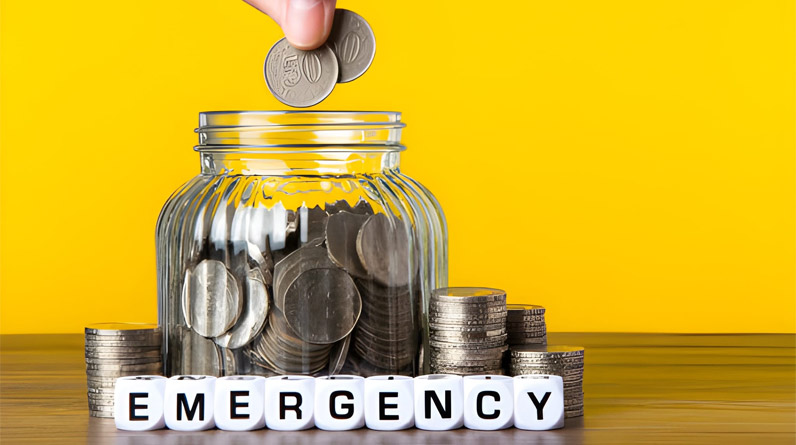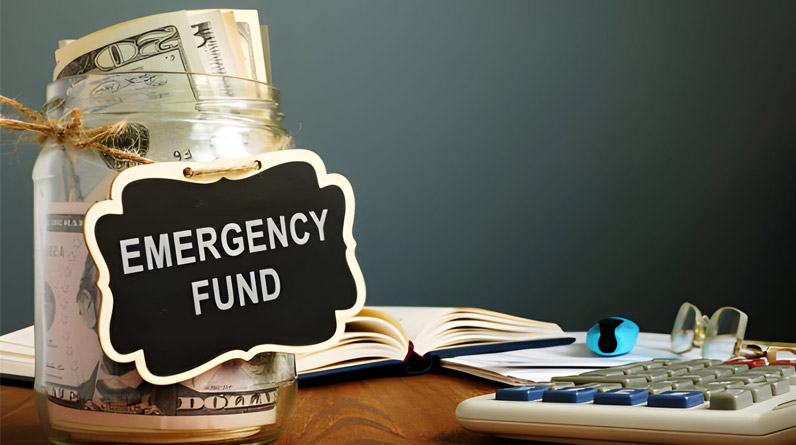Financial emergencies don’t send warning letters. Your car doesn’t schedule its breakdown for next month when you’ll have extra cash. Medical bills don’t wait until your budget has breathing room. This is precisely why an emergency fund isn’t just recommended financial advice—it’s the difference between a temporary setback and a financial catastrophe.
Despite its critical importance, 24% of Americans have no emergency savings whatsoever, while only 46% have enough to cover three months of expenses. If you’re among the majority feeling financially vulnerable, this guide will show you how to build a robust emergency fund, even if you’re starting from zero.
What Is an Emergency Fund? Beyond the Basic Definition
An emergency fund is more than money sitting in an account—it’s financial insurance you pay yourself. Think of it as a personal safety net that catches you when life pushes you off balance. Unlike traditional insurance, you control when and how to use it, and every dollar you contribute directly benefits you.
This dedicated cash reserve covers unexpected, urgent expenses such as:
- Job loss or significant income reduction
- Medical emergencies and unexpected healthcare costs
- Major home repairs (roof leaks, furnace failures, plumbing disasters)
- Critical car repairs that affect your ability to work
- Emergency travel for family situations
- Veterinary emergencies for pet owners
The key distinction: emergency funds address needs, not wants. A surprise concert ticket sale isn’t an emergency. A broken water heater flooding your basement is.
Why You Actually Need an Emergency Fund: The Hidden Costs of Being Unprepared
The Debt Trap Nobody Talks About
When a $1,000 emergency strikes, 25% of Americans reach for a credit card. This seemingly simple solution creates a compounding problem. That $1,000 emergency at 20% APR becomes $1,200 after a year if you’re making minimum payments. Miss a payment, and penalty fees add another layer of financial stress.
Consider this scenario: Sarah’s car needs a $2,500 transmission repair. Without emergency savings, she puts it on a credit card at 24% interest. Making $100 monthly payments, she’ll pay $3,280 total and take 38 months to clear the debt. That single emergency cost her an extra $780 and over three years of financial burden.
The Mental Health Factor
Among individuals whose mental health is negatively affected by financial concerns, 57% cite insufficient emergency savings as a primary source of stress. This anxiety isn’t abstract—it affects sleep quality, work performance, relationships, and physical health. An emergency fund provides psychological security that’s difficult to quantify but impossible to overvalue.
Protecting Your Long-Term Financial Goals
Without an emergency fund, you’re forced to raid retirement accounts or halt contributions toward major goals like homeownership. Early retirement withdrawals trigger tax penalties and permanently reduce your compound growth potential. One $5,000 emergency withdrawal at age 35 could cost you $38,000 in lost retirement income by age 65.
How Much Should You Save? A Personalized Approach
The standard advice—three to six months of expenses—is a starting point, not a universal answer. Your ideal emergency fund depends on your unique financial ecosystem.
Calculate Your Personal Target
Start with your essential monthly expenses:
| Expense Category | Monthly Amount |
|---|---|
| Housing (rent/mortgage, utilities) | $1,500 |
| Transportation (car payment, gas, insurance) | $450 |
| Food and groceries | $600 |
| Insurance (health, life, home) | $400 |
| Minimum debt payments | $300 |
| Basic phone/internet | $100 |
| Total Monthly Essentials | $3,350 |
For this example, a three-month emergency fund would require $10,050, while six months would need $20,100.
When You Need More (or Less)
Save 6-12 months if you:
- Are self-employed or work in a volatile industry
- Are the sole income earner with dependents
- Have high insurance deductibles ($5,000+)
- Own a home (more potential for expensive repairs)
- Work in a specialized field with limited job opportunities
A 3-month fund may suffice if you:
- Have dual incomes with no dependents
- Work in a stable industry with high demand
- Have additional safety nets (family support, substantial investments)
- Rent and have minimal fixed expenses
Where to Keep Your Emergency Fund: Strategic Placement

The Goldilocks Principle of Accessibility
Your emergency fund needs to be accessible enough for true emergencies but inconvenient enough to discourage casual spending. This balance is crucial.
Best Option: High-Yield Savings Account
High-yield savings accounts (HYSA) at online banks currently offer 4-5% APY—significantly higher than traditional banks’ 0.01-0.5%. On a $10,000 emergency fund, this difference means earning $400-500 annually versus $1-50.
Key features to prioritize:
- FDIC or NCUA insurance (protects up to $250,000)
- No monthly maintenance fees
- Easy electronic transfers (typically 1-3 business days)
- No minimum balance requirements
Where NOT to Keep Emergency Funds
Checking Accounts: Too tempting for everyday spending, and you’ll earn virtually no interest.
Certificates of Deposit (CDs): Early withdrawal penalties defeat the purpose of emergency access.
Investment Accounts: Market volatility means your $10,000 could be worth $7,000 when you need it most. Remember March 2020, when markets dropped 34% in weeks?
Under Your Mattress: No growth, vulnerable to theft or disaster, and inflation steadily erodes purchasing power.
How to Build Your Emergency Fund: The Accelerated Strategy
Step 1: Set Milestone Goals
A $20,000 target feels overwhelming. Break it into psychological wins:
- Milestone 1: $1,000 (covers most minor emergencies)
- Milestone 2: One month of expenses
- Milestone 3: Three months of expenses
- Milestone 4: Six months of expenses
Celebrate each milestone. These victories build momentum and reinforce your savings habit.
Step 2: Automate Everything
Willpower is finite. Automation is forever. Set up automatic transfers on payday—before you see the money in your checking account. Even $50 per paycheck becomes $1,300 annually.
The Split Deposit Method: Ask your employer to direct deposit your paycheck into two accounts. Route your target savings amount directly to your emergency fund, with the remainder going to checking. What you don’t see, you won’t miss.
Step 3: Capture Irregular Income
These opportunities accelerate your progress dramatically:
- Tax refunds: The average refund is $3,050—that’s 30% of a $10,000 goal in one deposit
- Work bonuses: Save 50-75% and enjoy the rest guilt-free
- Cash gifts: Redirect birthday and holiday money
- Side hustle earnings: Dedicate supplementary income until you reach your target
Step 4: The Expense Audit Challenge
Conduct a 30-day expense audit. Track every dollar. Most people discover $200-500 in monthly spending that provides minimal value. Common culprits:
- Subscription services forgotten but still charging ($20-100/month)
- Convenience spending (daily coffee runs, frequent takeout)
- Premium service tiers you don’t fully utilize
- Bank fees that are entirely avoidable
Redirecting $250 monthly creates a $3,000 emergency fund in one year.
Step 5: The Incremental Increase Method
Start with what feels comfortable, then increase by 1% monthly. Begin saving $100 per paycheck, then $101 the next month, $102 the following month. These tiny increases are barely noticeable but compound significantly. After 12 months, you’re saving $112 per paycheck—a 12% increase that happened gradually.
When to Use Your Emergency Fund (and When Not To)
The Three-Question Test
Before tapping your emergency fund, ask:
- Is this truly unexpected? Annual car registration isn’t an emergency; it’s predictable.
- Is this urgent and necessary? Can you safely delay this expense?
- Have I exhausted other options? Could adjusting this month’s budget cover it?
If you answer “yes” to all three, use your emergency fund without guilt. That’s exactly why it exists.
Common Emergency Fund Mistakes
Treating wants as needs: A spontaneous vacation deal isn’t an emergency. A last-minute flight to see a hospitalized parent is.
Using it for predictable expenses: Holiday shopping, annual insurance premiums, and back-to-school costs should be budgeted separately.
Failure to replenish: After using your fund, immediately resume contributions. Treat it like a loan you’re repaying yourself.
Balancing Emergency Savings with Debt Repayment
This dilemma paralyzes many people: should I save or pay off debt first? The answer is both, strategically.
The Hybrid Approach:
- Build a starter emergency fund of $1,000-1,500
- Attack high-interest debt aggressively (credit cards over 15% APR)
- Once high-interest debt is manageable, split extra funds 50/50 between debt payoff and emergency savings
- After reaching three months of expenses saved, shift focus back to remaining debt
This method provides some protection while still making meaningful debt progress, avoiding the all-or-nothing trap that leads many to abandon both goals.
The Bottom Line: Your Financial Foundation Starts Here
An emergency fund transforms how you experience financial life. It’s the difference between a crisis and an inconvenience, between panic and peace of mind, between spiraling debt and maintained stability.
Start today—not next month, not after you “get your finances together.” Open that high-yield savings account. Set up an automatic $25 weekly transfer. Save your next $20 bill. Small actions compound into substantial security.
Your future self, standing confidently in the face of an unexpected expense, will thank you for the foundation you’re building right now. Because emergencies are inevitable, but financial catastrophe doesn’t have to be.


